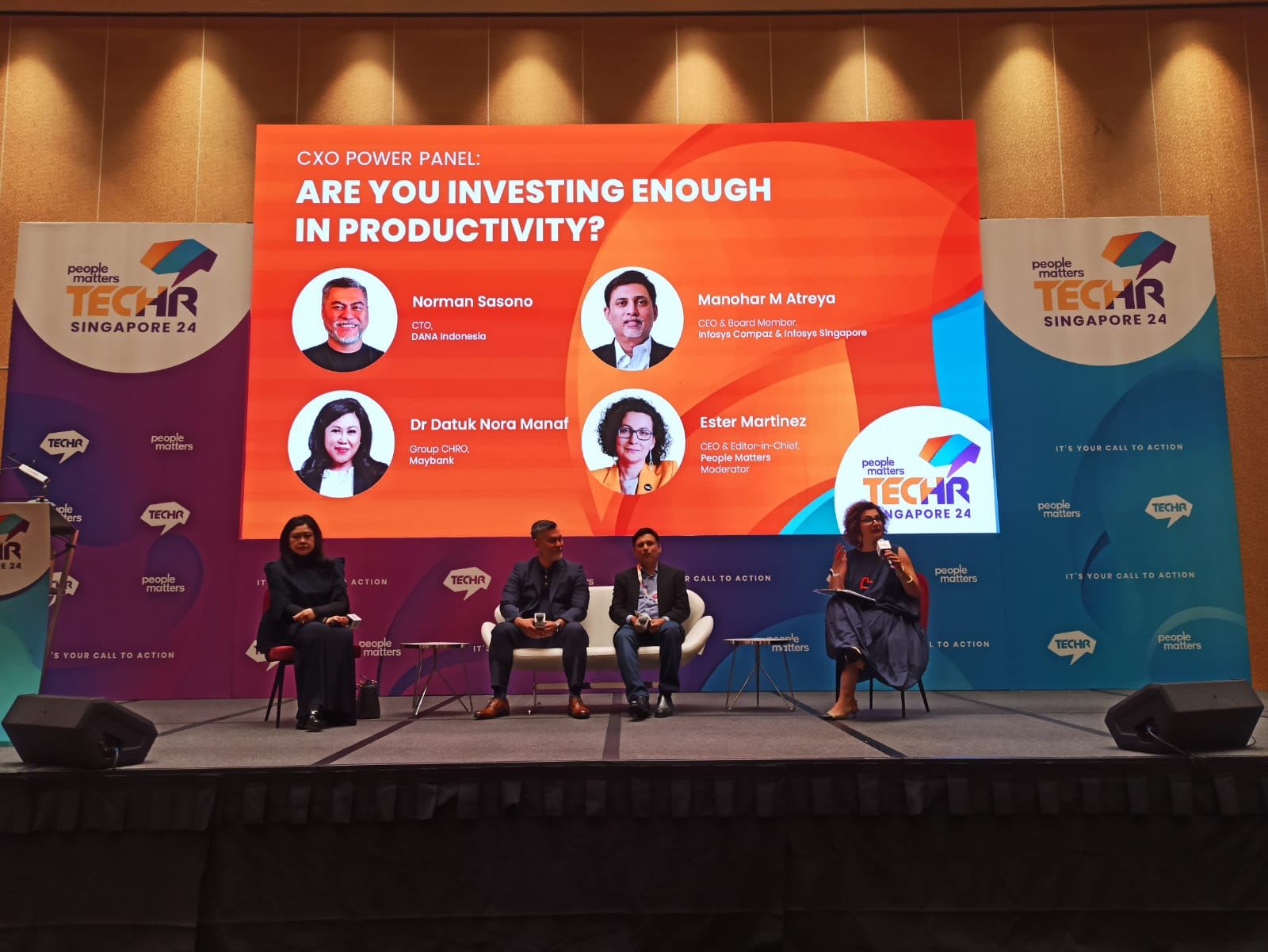Why happy employees are the key to real productivity

There's a well-documented gap between HR and CEOs in how they perceive and prioritise factors contributing to productivity. Studies often explore this disparity by examining different perspectives on aspects like company culture, employee well-being, and technology adoption.
At the People Matters TechHR Singapore 2024 conference, HR leaders were asked to rate their organisation's productivity. Most rated it between six and eight. However, when asked to estimate their CEOs' ratings, the scores plummeted to around five revealing a stark gap between the views on productivity.
"The board views the organisation as an engine," Manohar M Atreya CEO and Board Member, Infosys Compaz & Infosys Singapore, explained. "Their primary concern is delivering results – revenue, profit, efficiency. These are the metrics they hold us accountable for."
Atreya captured the board's focus on metrics with his "engine" analogy. However, HR takes a more human-centric approach, prioritising employee well-being and happiness as the fuel that drives that engine. "We delve deeper," Atreya acknowledged. "Fostering a positive work environment, employee growth, and well-being – are the crucial elements that fuel the engine from within," he added.
Nora Manaf, Group Chief Human Capital Officer of Maybank, championed a more radical shift. "Early in my career," she began, "productivity was synonymous with one thing: workforce reduction. Today, a new definition is urgently needed. We can no longer equate productivity with simply maximising output through time and motion studies."
HR should move away from treating people as mere cogs in the machine. "True productivity lies in elevating human performance," she declared. "It's about unlocking the unrealised potential within our workforce."
Manaf challenged the audience to go beyond traditional metrics and embrace innovation as the true driver of productivity.
Atreya proposed a solution to this. A holistic understanding of productivity that bridges the internal and external perspectives. HR, he argued, must become adept at translating the language of employee well-being into the boardroom's preferred dialect of financial performance.
Productivity has often been narrowly interpreted as cutting costs or squeezing more output from existing resources. It's been about optimising to the maximum, rather than truly optimising for efficiency and sustainable growth, added Monaf.
Norman Sasono, CTO of DANA Indonesia, highlighted the challenges of implementing productivity initiatives. His observation that "results often fall short" of expectations pointed to a common struggle in translating strategic vision into operational reality.
Sasono's call to accelerate progress despite these challenges reflects the urgency felt by many organisations in an increasingly competitive global market.
Sasono highlighted the time it takes to implement new technologies and upskill employees. However, he emphasised the need for urgent action: "The world is moving fast," he cautioned. "We can't afford to be complacent. We need to find ways to bridge the gap between old expectations and new realities quickly."
The conversation delved deeper, exploring the burgeoning role of technology, particularly AI. And it revealed both excitement and caution among the panellists.
Sasono's emphasis on company-specific datasets as the "true gem" for AI implementation highlights a critical consideration for organisations looking to leverage AI effectively. This perspective aligns with current trends in AI development, where the quality and specificity of training data often determine the success of AI applications.
Atreya's anecdote about a marketer dreaming of AI handling routine tasks served as a powerful illustration of AI's potential to transform work. This example opened up a broader discussion on the ethical implications of AI adoption, touching on concerns about job displacement and the changing nature of work.
Manaf pinpointed AI's limitations in contextualisation and emotional understanding. Her emphasis on "innovation and untapped potential" suggests a future where human skills like creativity, empathy, and complex problem-solving become even more valuable.
The panel's agreement on prioritising human investment was perhaps the most forward-looking aspect of the discussion. Manaf's ambitious target to transition 25% of roles (approximately 12,000 positions) to align with emerging tech trends demonstrates a concrete commitment to preparing the workforce for future challenges.
This focus on reskilling and upskilling aligns with global trends identified by organisations like the World Economic Forum, which predicts that by 2025, 50% of all employees will need reskilling due to the adoption of technology.
The new face of productivity
These perspectives reflect a growing consensus that productivity in the 21st century is not merely about efficiency, but about fostering innovation, adaptability, and purpose-driven work.
The future of work demands a new definition of productivity. It's not just about squeezing more output, but about fostering innovation and adaptability, and an approach that prioritises employee happiness and well-being.
In doing so, it challenges conventional notions and points towards a future where success is measured not just in output, but in the ability to create value through continuous learning, innovation, and meaningful work that fosters employee happiness.
This shift prioritises investing in human potential, recognising that a happy and engaged workforce is the true engine of long-term productivity and success.


